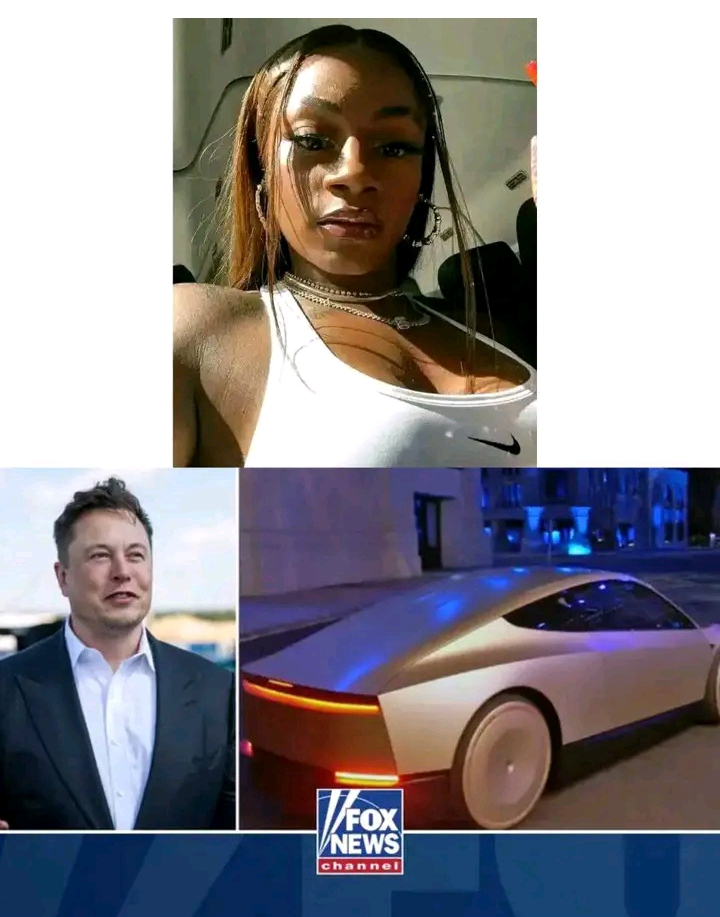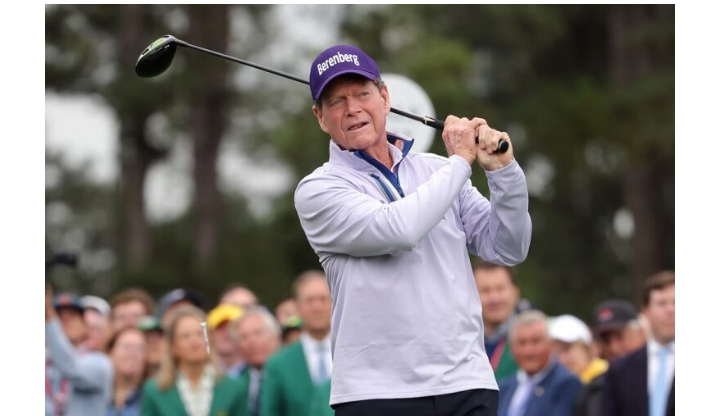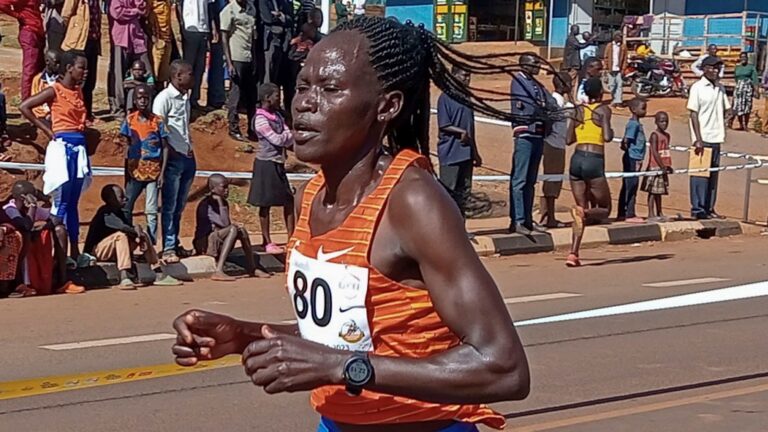Breaking: Tesla CEO Elon Musk Signs 3-year $850 Million Endorsement Deal with Professional Gymnast Sha’Carri Richardson,For Agreeing To see more 👇 👇
Breaking: Tesla CEO Elon Musk Signs 3-year $850 Million Endorsement Deal with Professional Gymnast Sha’Carri Richardson,For Agreeing To see more 👇 👇 In a move that has stunned both the sports and tech industries, Tesla CEO Elon Musk has inked a groundbreaking $850 million endorsement deal with world-class sprinter Sha’Carri Richardson. Over the next three…
Breaking: Tesla CEO Elon Musk Signs 3-year $850 Million Endorsement Deal with Professional Gymnast Sha’Carri Richardson,For Agreeing To see more 👇 👇
In a move that has stunned both the sports and tech industries, Tesla CEO Elon Musk has inked a groundbreaking $850 million endorsement deal with world-class sprinter Sha’Carri Richardson. Over the next three years, Richardson, widely recognized for her electrifying speed on the track, will play an integral role in the development of Tesla’s humanoid robots and future electric vehicle models. The partnership marks a new era in sports-tech collaboration, with Richardson bringing her unparalleled athletic expertise into the high-stakes world of AI and robotics.
While Sha’Carri Richardson’s lightning-fast performances in track and field have earned her global acclaim, her new role with Tesla is set to expand her influence far beyond the sporting arena. This unprecedented deal will see Richardson not just as the face of Tesla, but as a direct contributor to the company’s mission of optimizing the speed, agility, and efficiency of its robots and electric vehicles.
The Tesla-Sha’Carri Richardson partnership is both groundbreaking and unexpected, bringing together two fields that rarely overlap. Richardson, known for her explosiveness and athletic prowess, will use her deep understanding of biomechanics and speed to help Tesla’s engineers refine their approach to robotics and electric vehicle design. Specifically, Richardson’s insight will be invaluable in optimizing Tesla’s humanoid robots, including the highly anticipated Tesla Bot (also known as Optimus), and helping Tesla vehicles achieve greater performance metrics, especially in terms of acceleration and overall agility.
Elon Musk, ever the visionary, believes that Richardson’s understanding of movement, acceleration, and human kinetics can help Tesla push the boundaries of what is possible in robotics. “Sha’Carri isn’t just one of the fastest athletes on Earth; she’s a living embodiment of speed and precision,” Musk said during the deal’s announcement. “Her knowledge of biomechanics will be crucial in teaching our robots how to move like humans and helping our electric vehicles perform even better.”
The heart of this collaboration lies in Musk’s ambitious plan to create robots capable of mimicking human motion with remarkable fluidity and speed. Tesla’s robotics division has been hard at work developing Optimus, the humanoid robot designed for tasks ranging from industrial labor to caregiving and beyond. However, current robot movements, while functional, often lack the grace, fluidity, and natural coordination found in human athletes.
Enter Sha’Carri Richardson, whose world-class sprinting ability offers an entirely new perspective on what high-performance movement should look like. As part of the deal, Richardson will spend time with Tesla’s AI and robotics teams to break down the mechanics of speed, acceleration, and quick recovery movements that are essential to elite athletes. Through this collaboration, she will help Tesla’s engineers translate the principles of human athleticism into coding algorithms that allow robots to move faster and more efficiently.
One of the key challenges in robotics is developing machines that can accelerate quickly, adapt to sudden changes in terrain, and recover from falls or obstacles with the same agility and precision as humans. Richardson’s ability to execute lightning-fast starts and seamlessly transition between explosive and controlled movements provides the perfect case study for Tesla’s robots, which need to function in complex environments without human-like capabilities.
Moreover, Richardson’s focus on endurance and maintaining top speed over longer distances will also inform how Tesla’s robots are designed to sustain high levels of performance for extended periods. By working directly with Tesla’s AI researchers, Richardson will contribute to shaping the future of robotics, ensuring that Tesla bots not only move quickly but do so with purpose and precision.
While Richardson’s input will be pivotal in Tesla’s robotics division, her influence will extend far beyond robots. Tesla’s electric vehicles (EVs) are already known for their remarkable speed and acceleration, but the company is always seeking new ways to push the limits of performance. Richardson’s knowledge of how to maximize speed in the most efficient way possible will be instrumental in helping Tesla fine-tune the performance of its next generation of EVs.
Tesla’s vehicles have already set the standard for electric car acceleration, with the Tesla Model S Plaid capable of going from 0 to 60 mph in under two seconds. However, Musk’s vision extends beyond raw power. He wants Tesla’s vehicles to be not just the fastest, but also the most energy-efficient when it comes to harnessing and maintaining speed over long distances. This is where Richardson’s expertise as a sprinter becomes invaluable.
Richardson’s role in this aspect of Tesla’s development will focus on the principles of sprinting efficiency. In sprinting, athletes must reach top speeds quickly while also conserving enough energy to maintain performance through the finish line. Translating these principles to EV design could help Tesla create cars that accelerate more smoothly and efficiently, while also maintaining speed with less energy consumption. By analyzing Richardson’s sprinting techniques—her starting posture, the acceleration phases, and how she transitions into top speed—Tesla engineers can develop new software and hardware improvements to boost vehicle performance.
A major component of this partnership will be Tesla’s ongoing work in artificial intelligence. Richardson’s work with Tesla will also include a deep dive into the biomechanics of human speed, providing critical data to Tesla’s AI algorithms. Using motion-capture technology and advanced AI modeling, Tesla’s teams will study Richardson’s every movement, analyzing how her body responds to different stimuli and conditions. The data generated will be fed into Tesla’s machine learning systems to train the Tesla Bot and other AI systems to replicate human-like movements and decisions.
This combination of AI and biomechanics represents a new frontier in both robotics and vehicle design. For Tesla, it’s about more than just creating faster robots or cars—it’s about creating machines that understand and mimic human movement in the most natural and efficient way possible. By integrating Sha’Carri Richardson’s understanding of speed and performance into their AI models, Tesla could be laying the groundwork for a future where robots and autonomous vehicles move as seamlessly as human athletes.
Richardson expressed her excitement about this cutting-edge collaboration: “It’s a dream come true to be able to apply everything I’ve learned as an athlete to something as revolutionary as Tesla’s robotics and electric vehicles. Elon Musk has always been about pushing the boundaries of what’s possible, and I’m thrilled to be part of that journey.”
This collaboration between Sha’Carri Richardson and Tesla has the potential to significantly impact industries far beyond the track or automotive world. As Tesla continues to develop humanoid robots capable of more complex tasks, Richardson’s influence could extend into industries such as healthcare, manufacturing, and even disaster relief. Robots that can move faster and with more agility could perform tasks that previously required human intervention, such as aiding in search-and-rescue operations, providing physical therapy, or performing delicate surgeries.
One of the key challenges facing humanoid robots today is their inability to move with the same speed and efficiency as humans, particularly in unpredictable environments. With Richardson’s help, Tesla could develop robots that not only respond quickly to changing environments but do so with the kind of precision and speed that only world-class athletes can achieve.
In the world of healthcare, for example, faster and more efficient robots could revolutionize physical therapy, assisting patients with mobility exercises and recovery in ways that are currently impossible with today’s machines. In manufacturing, robots that can move with agility could improve productivity by taking on more complex tasks, reducing human error, and speeding up production processes. And in emergency situations, robots with Richardson’s athletic-inspired speed and precision could save lives by navigating dangerous environments more effectively.
While the deal has generated considerable excitement, it has also attracted a fair amount of skepticism. Critics argue that while Richardson’s speed on the track is undeniably impressive, applying that to Tesla’s robotics and automotive divisions may be a stretch. Robotics experts point out that replicating human-like movement in machines is incredibly complex, requiring more than just an understanding of biomechanics but also major advances in machine learning, hardware design, and software.
Others question whether Richardson’s athletic experience will truly translate into meaningful gains for Tesla’s technology. While top athletes possess extraordinary physical abilities, some experts argue that the principles of sprinting may not apply as directly to robotics or vehicles as Musk and Tesla suggest. “While it’s a bold and exciting partnership, there’s a big leap from athletic performance to machine optimization,” said Dr. Amanda Green, a leading expert in AI and robotics.
Musk, however, remains undeterred. Known for his ambitious and sometimes controversial ideas, Musk has often faced skepticism before ultimately proving his critics wrong. “Innovation doesn’t come from doing what’s been done before,” Musk said in response to the critics. “We’re combining the best of human and machine intelligence, and with Sha’Carri’s help, we’re going to unlock the next level of speed and efficiency in ways that people haven’t even imagined yet.”
The $850 million endorsement deal between Tesla and Sha’Carri Richardson marks a bold step forward in the intersection of sports, technology, and robotics. Musk’s vision of integrating athletic performance with cutting-edge AI and robotics represents a new chapter in Tesla’s ongoing mission to push the boundaries of what technology can achieve. With Richardson’s expertise in speed, biomechanics, and performance guiding Tesla’s future innovations, we may soon see a world where robots and electric vehicles move with the same grace, agility, and speed as the world’s fastest human athletes.
As the partnership unfolds, all eyes will be on how this collaboration shapes the future of Tesla’s robotics and vehicle programs. Whether Richardson’s influence leads to groundbreaking advances in AI and machine movement remains to be seen, but one thing is certain…


